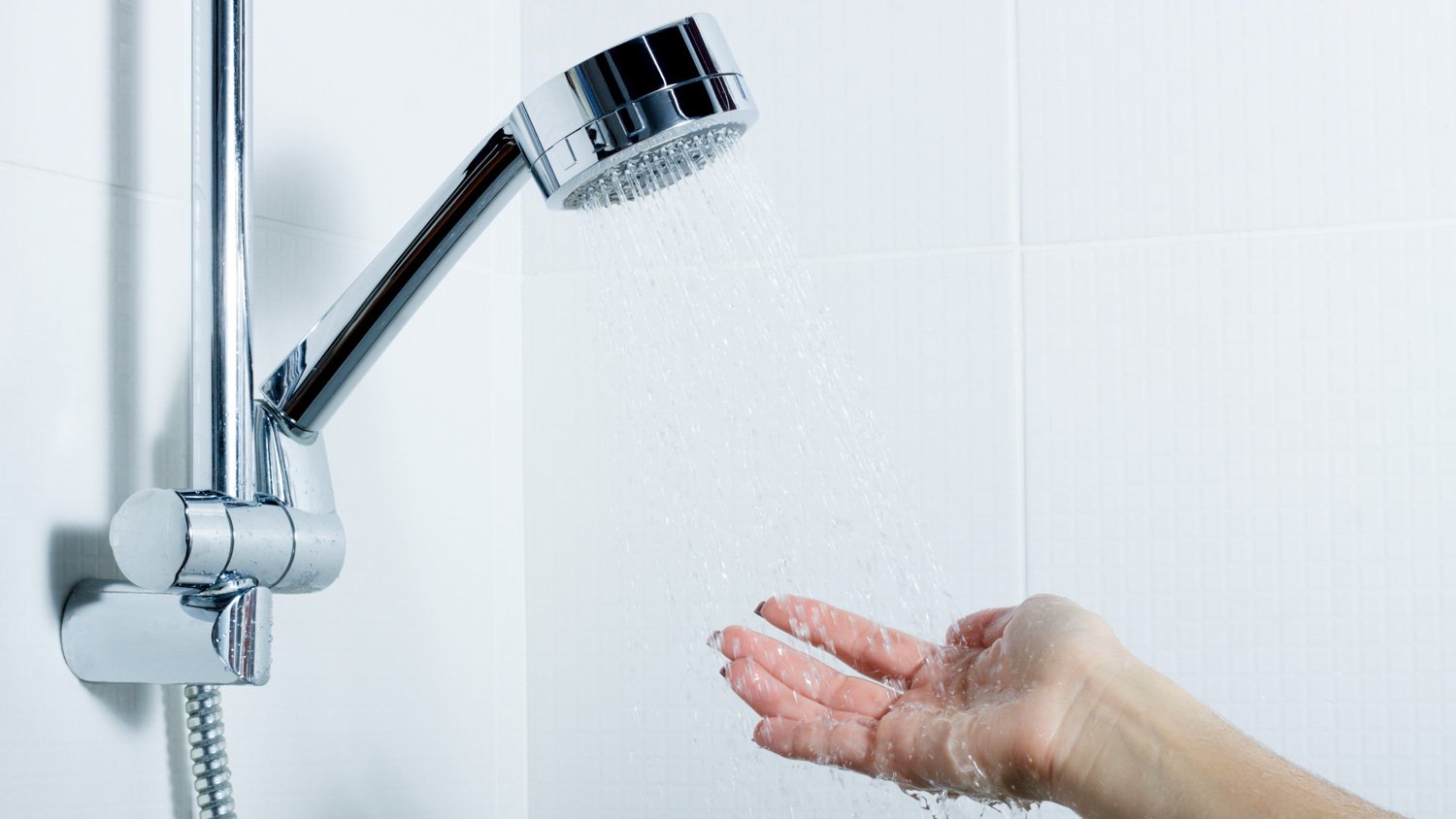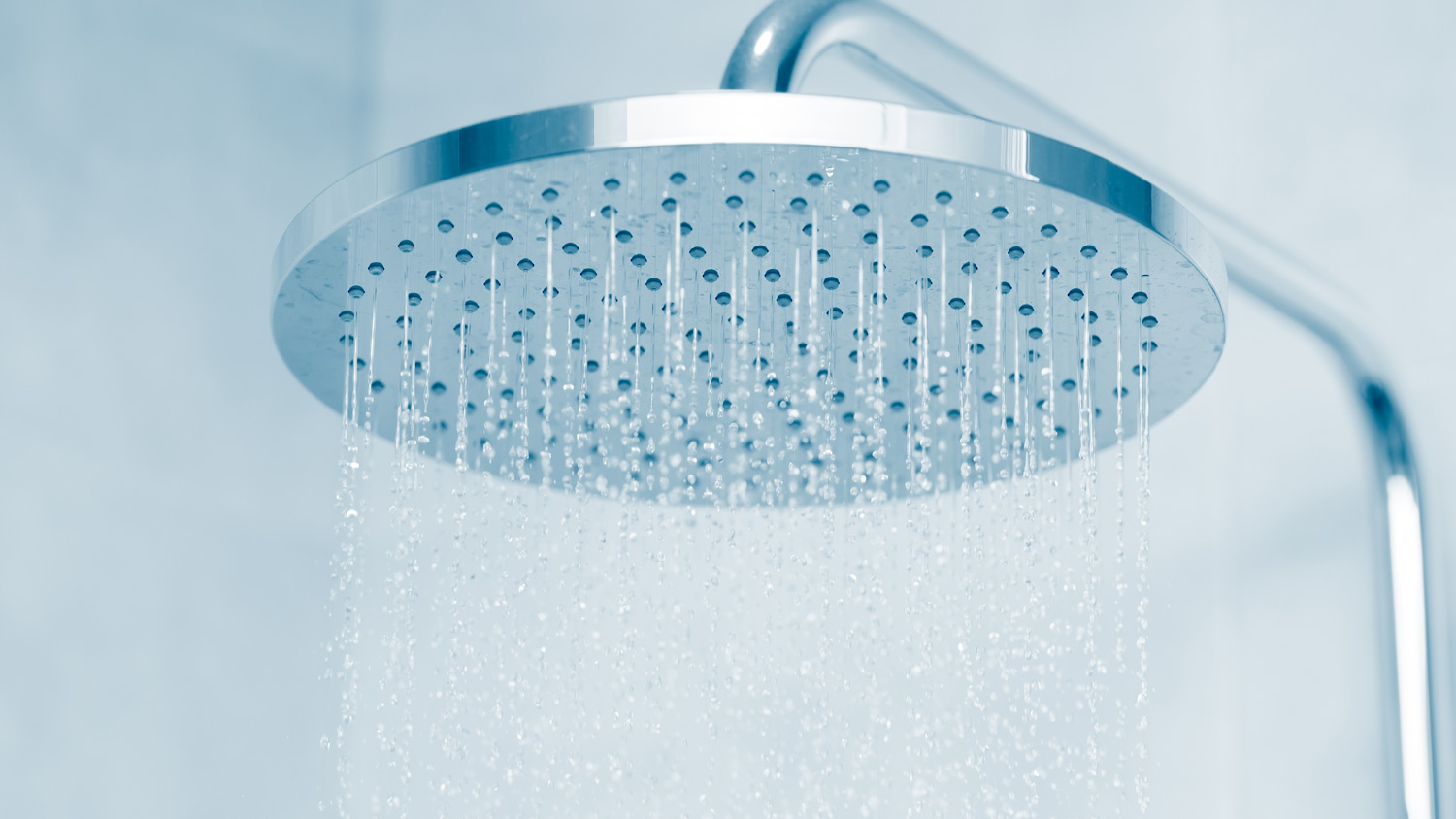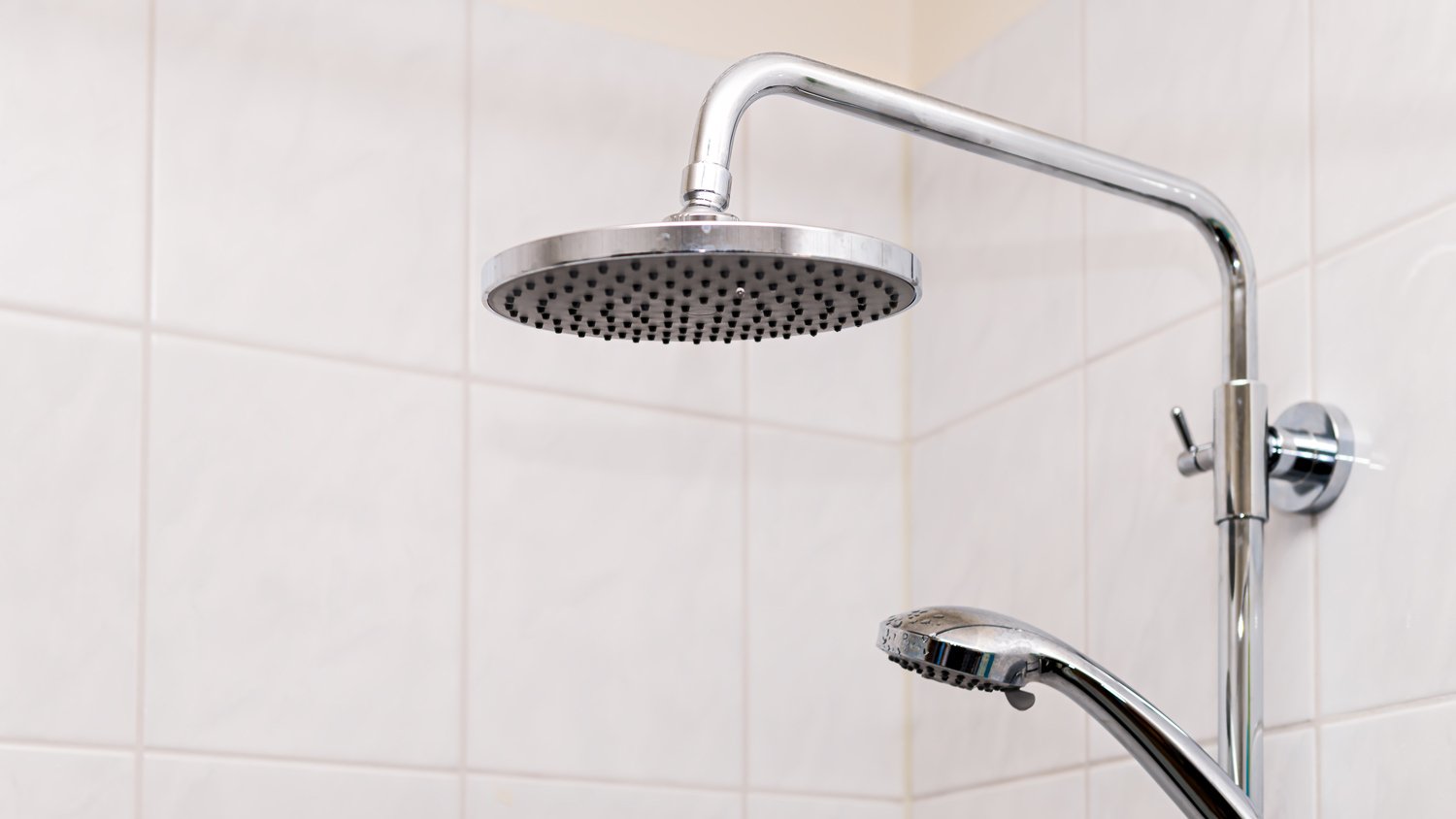
Learn about main water line repair costs in Columbus and what affects pricing to be prepared before you start getting estimates.
This definitive guide highlights the most popular showerheads


The shower is a special place, both a site of everyday and ordinary tasks and a gentle refuge from the stressors of a long day. Without the right showerhead, however, it can quickly become a place of frustration, providing neither the cleanliness nor the comfort you seek. Today, the market offers various styles and options for different preferences and bathroom types. We’ll walk you through every type of showerhead on the market so you can confidently pick the best one for you and your home.

There’s a reason this is called standard—when you close your eyes and picture a shower, this is likely the showerhead you see. This option can be found in simple, straightforward (and economical) models, though some styles offer adjustable angles and different spray patterns. The more elaborate the model, the higher the cost. In addition, some options feature newer technology that prevents hard water buildup or corrosion. The cost range for this style is $25 to $200.
| Pros | Cons |
|---|---|
| Simple and straightforward | Limited options for customization |
| Some models offer options for spray patterns and angles | Doesn’t offer flexible rinsing options |
| Easy to use | High-end models can be expensive |
Best for: Homeowners who want a tried and true showerhead style

Handheld showerheads can be removed from their mounting, allowing flexibility when it comes to washing kids and pets. They can also be used for those who need an accessible, sit-down bathing option and can make cleaning the tub a much less onerous chore. Some people also like the feeling of the water being very close to their skin, which can provide a massage-like stimulation. Handheld showerheads cost anywhere from $30 to $150.
| Pros | Cons |
|---|---|
| Can be used standing or sitting | More prone to leaks |
| Helps wash kids and pets | May require additional steps for installation |
| Makes cleaning the shower easier | Requires more manual effort |
Best for: Those with mobility issues, families with children, and people with pets

Rain showerheads have necks extending out from the wall (6 to 12 inches) or installed in the ceiling. The water falls on you the way a gentle rainstorm might. Some people find this simulation relaxing and spa-like, and they also prefer the elegant look of this type of showerhead. However, rain showers have few spray options and only offer low water pressure. A simple hardware store fixture costs around $100, but luxury models can be as high as $500.
You may also have to invest in adding plumbing to accommodate this fixture. If this is your ideal showerhead, speak with a professional faucet installer or a plumber to find out what you need to make it work.
| Pros | Cons |
|---|---|
| Spa-like shower experience | Fewer spray options |
| Relaxing sensation | Low water pressure |
| Elegant design | More expensive than standard showerheads |
Best for: High-end spa-like designs

Dual showerheads are one of the best showerhead options for families with different shower style preferences, as they feature two showerheads on one base. One of the heads might be a wall-mounted one—sometimes a rain style—and the other could be a handheld. The unit’s diverter valve will let you decide which showerhead you want on. Some valves will allow you to have both heads on at the same time. A simple dual showerhead can be purchased for as low as $30, but luxury models with extra features can run into the thousands.
| Pros | Cons |
|---|---|
| Good for families | More opportunities for issues to arise |
| Can choose which showerhead to use | More to clean |
| Can help rinse hard to reach places | Higher cost |
Best for: Families with small children or anyone else who needs a handheld option
Not all water quality is created equal, and in some places, shower water might contain chemicals and minerals, such as chlorine, that irritate skin and dry out hair. If you live in a place with hard water, you can buy a showerhead with a built-in filter. Be sure to research which contaminants exist in your water so you can buy a showerhead suited to your location. Depending on the complexity, these cost anywhere from $35 to $150.
| Pros | Cons |
|---|---|
| Creates cleaner, softer water | Might not benefit you if you don’t have hard water |
| Can choose one suited to your location | May not eliminate all issues |
| Moderately priced | Requires regular filter changes |
Best for: Homeowners concerned about water quality
A panel system is a sleek, modern solution for your shower if you want a highly customizable experience. You can select your level of shower pressure and install preconfigured models or design your own.
This opens up a whole array of choices as to where the panels are installed (overhead, at your knees, and chest-height), how many of them you want, the level of pressure, and more. However, if you’re concerned with water efficiency, this is probably not the best choice.
Panel systems also tend to be on the pricier side, costing between $1,000 and $3,000 on average, depending on the level of customization. In addition, you will need to drill multiple holes into your shower to install them, so it could be difficult someday to replace the panels with a more straightforward showerhead.
| Pros | Cons |
|---|---|
| Highly customizable shower experience | More expensive than most other showerheads |
| Can be installed in a variety of locations | Difficult installation |
| Sleek and modern | Challenging to replace with a standard showerhead |
Best for: High-tech shower-takers

| Pros | Cons |
|---|---|
| Adjustable position | Can cost hundreds of dollars |
| Good for those with mobility issues | More potential for leaks |
| Can be installed in different directions depending on the need | Possibility of lower water pressure |
Best for: Those who need to be able to adjust the height of the showerhead
These may cost a little more upfront, but they can ultimately save you money on your water bill as they mix water and air to create the feeling of stronger water pressure—while using much less water than other options. We found aerating showerheads ranging from $35 to $90.
| Pros | Cons |
|---|---|
| May save money on water bills | Can be more costly than basic showerheads |
| Creates a sense of strong pressure | May have lower water temperature |
| Conserves water | Users may not like the style of the spray |
If conserving water at home is your top priority, a low-flow showerhead will help to reduce your overall water usage and keep your bills down. Many showerhead manufacturers advertise low-flow heads but follow the maximum flow rate (2.5 gallons per minute) established by the Energy Policy Act in 1992.
Several states, such as California and Vermont, have updated and lowered those standards, which could become more commonplace. True low-flow heads often have a flow rate of 1.5 gallons per minute to meet this demand. Basic models cost around $40, with rain styles coming in higher at $150 to $200.
| Pros | Cons |
|---|---|
| Helps conserve water | May not offer enough pressure |
| Can meet flow rate requirements in certain states | May not be true “low-flow” |
| Saves money on water bill | Some styles are more expensive than standard showerheads |
Best for: The eco-conscious homeowner
These are for campers, which notoriously have very low water pressure, and are meant to tackle that issue. They are better suited for very small bathrooms, though you’ll need to check the plumbing setup as they aren’t easily installed in many standard home plumbing systems. RV showerheads cost around $40 to $60.
| Pros | Cons |
|---|---|
| Specifically designed for RV or camper use | Not always suitable for homes |
| Suited for small bathrooms | Low-flow |
| Can handle low water pressure | Needs a specific plumbing setup |
Best for: Small RV or camper bathrooms
Meant to invoke the same water-saving strategy those at sea might employ, these showerheads have an on-off switch so you can pause your shower while soaping up and then restart the flow when you’re ready. Unlike turning the shower completely off and back on, using the navy shower will allow you to maintain whatever optimal water temperature you’ve already set. We found many priced between $25 and $65.
| Pros | Cons |
|---|---|
| Conserves water | You may get cold while soaping up |
| Maintains water temperature | May have a narrower spray pattern |
| Can save on water bills | May not have different spray pattern options |
Best for: Homeowners who want to conserve water while enjoying their shower
If you’ve ever thought showering might be more fun if it were inside a disco, well, an LED-lit showerhead might be a good choice for you. These fun showerheads change colors depending on the water temperature, which, in addition to creating a party ambiance, can help kids know when the water might be too hot. Options range from $40 to $200, depending on how elaborate the fixture is.
| Pros | Cons |
|---|---|
| Powered by water flow | May not appeal to everyone |
| Light changes with water temperature | Can be more expensive than other types |
| Color-changing effect livens up the shower | May not be able to control the light color |
Best for: Homes with children and children at heart
A smart showerhead can do a number of things, all controlled by your smartphone. You can free your inner Celine Dion, as many of them have built-in Bluetooth speakers, or set shower timers to limit your water usage and make sure you stay on schedule. One model, the Kohler Moxie ($150 to $250 before installation), also comes with Alexa, making it easy to order more body wash as soon as you realize you’re down to the last few drops.
| Pros | Cons |
|---|---|
| Can include speakers, lights, and more | More expensive than other types |
| Can reduce water usage | Smartphone connection required to use the features |
| Controlled by your smartphone | Requires Bluetooth connection |
Best for: Smart homes and tech-savvy homeowners
You may have thought we went through all of the showerhead options at this point, but deciding on a showerhead when replacing bathroom fixtures also depends on how you will mount it in the shower, the finish, and additional features. If you’re unsure what will work best, you can work with a faucet installation pro near you to choose between the many options.
Showerheads are mounted on the wall or ceiling, but you can also mount them on a bar for more flexibility. If you’re remodeling an existing shower, it may be best to stick with the way the showerhead is currently mounted to save on time and labor costs. However, if you’re converting a tub to a walk-in shower or installing a new shower, you can choose the one that’s best for you.
Wall-mount showerheads sit on the shower surround and project from the wall, 80 inches above the bathroom floor. This is the most popular type of showerhead mount and is likely what you picture when you think of a shower. Wall-mount showerheads can be standard or rain showerheads with an arm that extends away from the wall. They can also include features like LED lights, Bluetooth capability, low-flow options, and more.
Ceiling-mount showerheads are rain showerheads installed into the ceiling above the shower and provide gentle pressure for a relaxing shower experience. These can be more difficult to install because the plumbing will likely have to be rerouted to accommodate the showerhead. Ceiling-mount showerheads can also come with different features to help customize your shower experience.
If a ceiling-mount showerhead is one of your must-haves, ensure your bathroom contractor is aware of this as early as possible so they can get the plumbing in the right spot. This type of showerhead may also increase your bathroom remodel costs due to the additional plumbing work.
A bar-mount showerhead is mounted on the wall and is a great option for a household with multiple shower users because the showerhead can slide along the bar to reach different heights. You can mount the bar vertically, horizontally, or diagonally for maximum flexibility.
If you’re ready to say goodbye to an outdated or faded finish, there are countless finish options—you no longer have to choose between just silver or brass. The finish you choose can affect the cost of replacing a showerhead, and common finishes include chrome, brushed nickel, polished nickel, and bronze, which are similar to traditional faucet finishes. But other options include matte black, copper, and pewter.
If you don’t want to get new fixtures, consider replating bathroom fixtures in gold, copper, chrome, or a range of other finishes to give old fixtures new life.
Having the right amount of water pressure and volume can mean the difference between a wonderful shower experience and one that’s lacking. While there are regulations that dictate the amount of water pressure and volume allowed by a showerhead, if you prefer more pressure, you can install an aerating showerhead. But if you’re okay with a true low-flow showerhead, you can save even more water and money on your utility bills.
A showerhead that allows for various spray patterns can ensure you get the clean you desire. While some gentle spray patterns are gentle and relaxing, others direct an intense spray to soothe sore muscles. Knowing the spray patterns you need will help you narrow down your showerhead choice.
It’s possible you never thought of a showerhead as having luxury features, but that couldn’t be further from the truth. Magnetic docking stations for handheld showers make it easier to remove and replace them while showering. Showerheads can come equipped with Bluetooth capabilities to control the shower from your phone or with voice-activated commands. Some showerheads can track water usage and connect to smart home devices. They also feature LED lights that indicate water temperature.
C.E. Larusso contributed to this piece.
From average costs to expert advice, get all the answers you need to get your job done.

Learn about main water line repair costs in Columbus and what affects pricing to be prepared before you start getting estimates.

Discover the leading factors affecting your main water line replacement cost in Columbus, including length, material selection, and installation details.

Learn how much plumbers cost in Columbus, Ohio. Discover pricing for faucet repairs, pipe work, and emergency services, plus how you can save money.

Your shower pan is an unsung hero that can prevent leaks and flooding in your bathroom. Learn how to spot a leaking shower pan and ways to fix it.

Range hood dripping water? You may have damaged flappers or need more insulation. Find out what’s causing the problem and call the right professional to fix it.

Extend the life of your appliances by installing a water pressure regulator—here is why this valve is essential in your home.